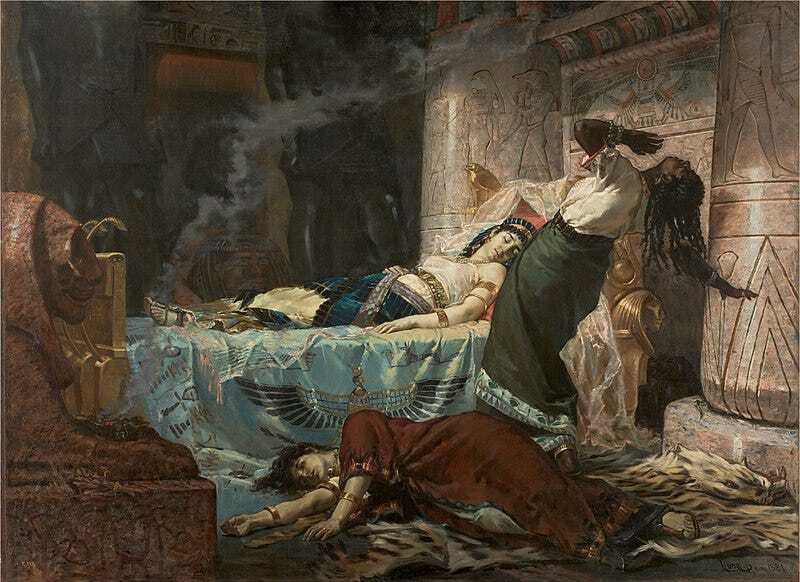The Death of Lady Macbeth: An In-Depth Analysis
Introduction
Lady Macbeth is one of the most complex characters in William Shakespeare’s tragedy “Macbeth.” Her ambition, manipulation, and eventual descent into madness make her a pivotal figure in the play. The circumstances surrounding her death are shrouded in ambiguity, leading to various interpretations and discussions among scholars and audiences alike. This article will explore how Lady Macbeth dies, the factors contributing to her demise, and the implications of her death in the context of the play. Additionally, we will provide a comprehensive FAQ section to address common questions about Lady Macbeth’s fate.
Overview of Lady Macbeth’s Character
Lady Macbeth is introduced as a fiercely ambitious woman who is willing to go to great lengths to see her husband, Macbeth, ascend to the throne of Scotland. She is characterized by her ruthless determination and her ability to manipulate Macbeth into committing regicide. Her famous invocation to the spirits to “unsex” her reveals her desire to cast aside feminine weakness in favor of the strength she believes is necessary to achieve her goals.
Key Traits of Lady Macbeth
| Trait | Description |
|---|---|
| Ambitious | Driven by a desire for power and status. |
| Manipulative | Skilled at influencing Macbeth to commit murder. |
| Guilt-ridden | Experiences profound remorse after the murder of King Duncan. |
| Mentally unstable | Suffers from psychological distress, leading to her eventual madness. |
The Psychological Decline of Lady Macbeth
As the play progresses, Lady Macbeth’s mental state deteriorates due to the guilt and paranoia stemming from her and her husband’s actions. After the murder of King Duncan, she initially appears strong and composed, but her facade begins to crumble as the consequences of their deeds weigh heavily on her conscience.
Key Moments Leading to Her Decline
- The Murder of Duncan: Lady Macbeth’s initial reaction to Duncan’s death is one of triumph, but as the reality of their actions sets in, she becomes increasingly troubled.
- Sleepwalking: In Act 5, Scene 1, Lady Macbeth is seen sleepwalking and attempting to wash imaginary blood from her hands, symbolizing her overwhelming guilt and psychological torment.
- Isolation: As Macbeth becomes more tyrannical and paranoid, Lady Macbeth finds herself increasingly isolated. This loneliness exacerbates her mental decline.
How Lady Macbeth Dies
The exact circumstances of Lady Macbeth’s death are not explicitly detailed in the text, leading to various interpretations. The most widely accepted interpretation is that she dies by suicide, driven by guilt and madness.
Evidence from the Text
- Malcolm’s Report: In Act 5, Scene 5, Macbeth learns of Lady Macbeth’s death through Malcolm’s report, which states that she died “by self and violent hands.” This phrase is commonly interpreted as an indication of suicide.
- Psychological Breakdown: Lady Macbeth’s descent into madness is evident throughout the play, culminating in her sleepwalking scene where she expresses her guilt. Her mental instability suggests that she may have taken her own life as a result of her overwhelming remorse.
- Symbolism of Blood: Lady Macbeth’s fixation on blood, particularly her attempts to wash it away, symbolizes her guilt. The blood represents her complicity in Duncan’s murder, and her inability to cleanse herself of it reflects her deteriorating mental state.
Interpretations of Lady Macbeth’s Death
The ambiguity surrounding Lady Macbeth’s death has led to various interpretations in literary criticism and performance. Here are some common interpretations:
- Suicide: The most prevalent interpretation is that Lady Macbeth’s death is a suicide, reflecting her inability to cope with the guilt of her actions.
- Accidental Death: Some interpretations suggest that her death could be accidental, perhaps resulting from her sleepwalking or other reckless behavior.
- Murder: In certain adaptations, directors have chosen to portray Lady Macbeth’s death as a murder, adding a layer of intrigue and drama to the narrative.
- Symbolic Death: Lady Macbeth’s death can also be viewed symbolically, representing the death of her ambition and the consequences of unchecked ambition.
Thematic Implications of Lady Macbeth’s Death
Lady Macbeth’s death serves as a critical turning point in “Macbeth,” highlighting several key themes in the play:
- Guilt and Conscience: Her demise underscores the theme of guilt and its psychological consequences. The weight of her actions ultimately leads to her mental breakdown and death.
- Ambition and Its Consequences: Lady Macbeth’s ambition drives her to manipulate Macbeth into committing murder. Her death serves as a cautionary tale about the dangers of unchecked ambition and the moral consequences of one’s actions.
- Fate vs. Free Will: The play raises questions about fate and free will, particularly in relation to Lady Macbeth’s choices. Her decision to pursue power ultimately leads to her tragic end.
The Impact of Lady Macbeth’s Death on Macbeth
Lady Macbeth’s death profoundly affects Macbeth, who is already spiraling into despair and madness. Upon hearing of her death, he delivers a poignant soliloquy reflecting on the futility of life:
“To-morrow, and to-morrow, and to-morrow,
Creeps in this petty pace from day to day
To the last syllable of recorded time;
And all our yesterdays have lighted fools
The way to dusty death.”
— Act 5, Scene 5
This soliloquy encapsulates Macbeth’s existential crisis and his recognition of the meaningless nature of life, particularly in light of the loss of his wife.
Conclusion
Lady Macbeth’s death is a significant moment in Shakespeare’s “Macbeth,” encapsulating the themes of guilt, ambition, and the consequences of one’s actions. While the exact circumstances of her death remain ambiguous, the implications of her demise resonate throughout the play, serving as a powerful reminder of the psychological toll of ambition and moral transgression. Through Lady Macbeth’s character, Shakespeare explores the complexities of human nature and the tragic consequences of unchecked desire.
FAQ Section
How does Lady Macbeth die?
Lady Macbeth’s death is widely interpreted as a suicide, driven by guilt and madness. The text indicates that she died “by self and violent hands,” suggesting self-inflicted harm.
What causes Lady Macbeth’s mental decline?
Lady Macbeth’s mental decline is primarily caused by overwhelming guilt from her role in Duncan’s murder and the subsequent events that unfold as a result of their ambition.
Is Lady Macbeth’s death shown on stage?
No, Lady Macbeth’s death occurs offstage, and the audience learns of it through Malcolm’s report in Act 5, Scene 5.
What does Lady Macbeth’s death symbolize?
Lady Macbeth’s death symbolizes the destructive nature of ambition, the psychological consequences of guilt, and the ultimate futility of seeking power through immoral means.
How does Macbeth react to Lady Macbeth’s death?
Macbeth is deeply affected by Lady Macbeth’s death, reflecting on the meaninglessness of life in his famous soliloquy that follows the news of her passing.
Are there different interpretations of Lady Macbeth’s death?
Yes, interpretations vary, with some viewing her death as a suicide, others suggesting it could be accidental, and some adaptations portraying it as murder.
What themes are highlighted by Lady Macbeth’s death?
Key themes highlighted by Lady Macbeth’s death include guilt and conscience, ambition and its consequences, and the conflict between fate and free will.
How does Lady Macbeth’s character change throughout the play?
Lady Macbeth transforms from a strong, ambitious figure who manipulates her husband into committing murder to a guilt-ridden and mentally unstable character who ultimately succumbs to her remorse.
Where can I find more information about Lady Macbeth?
For more detailed information about Lady Macbeth and “Macbeth,” you can refer to the Wikipedia page on Macbeth.
References
- Shakespeare, William. “Macbeth.” Folger Shakespeare Library.
- Wikipedia. “Macbeth.” Accessed August 9, 2024. https://en.wikipedia.org/wiki/Macbeth.



